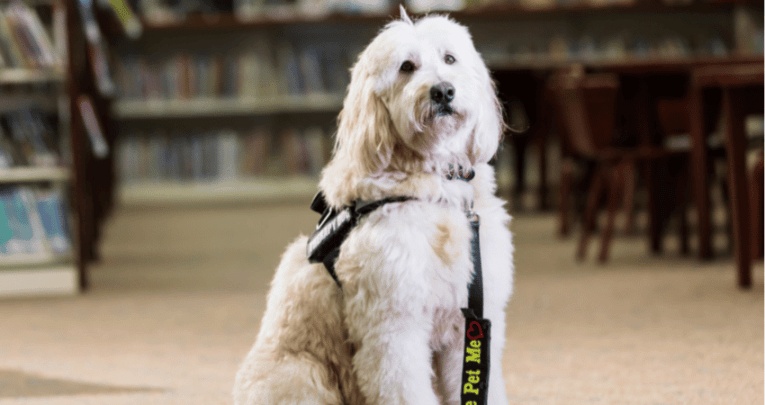Therapy dogs in schools – What you need to consider

Having animals in the classroom can benefit us all, but we need to think about their wellbeing, too…

- by Teachwire

Picture this: a child, who usually struggles with social interactions, walks into school and finds solace in spending time with a calm, relaxed therapy dog.
It’s an appealing scenario. However, before embarking on such activities, teachers and school leaders need to pause for thought.
The sight of a dog walking into a classroom can light up a child’s face with joy. Schools around the world are increasingly welcoming dogs into their classrooms to enhance learner wellbeing, engagement, motivation and social skills.
There is a growing body of international research indicating that dogs in schools can help in many ways. This includes reducing anxiety, promoting emotional regulation, and fostering empathy.
In an era where children and young people’s mental health is a priority, these benefits are invaluable.
But it’s crucial to recognise that not all children, teachers, and canines are comfortable interacting with one another.
Even in contexts where there is enthusiasm for the concept, without proper guidance and structure, the presence of dogs in schools can lead to unintended consequences.
The reality of integrating a sentient animal into a bustling school environment requires meticulous preparation, planning, and management.
These interactions only work if we ensure that we match the right child with the right dog, and then in the right classroom context.
Research about therapy dogs in schools
In our most recent study of dogs in school, which involved over 1,000 teachers worldwide, we uncovered some surprising and concerning findings.
Whilst many teachers are enthusiastic about the benefits of having pets in their classrooms, many also reported unexpected challenges.
Some teachers felt overwhelmed when trying to manage both a dog and children in a busy classroom environment. Incidents such as scratching, toileting and, in the worst cases, biting were reported.
Many teachers in our study felt unprepared to deal with these unexpected events. This is understandable; teachers are skilled and dedicated, but most are not trained dog handlers.
Adding to the complexity, many schools start to bring in a dog without formal guidance or experience. The lack of readily available high-quality guidelines means that these interactions are not always positive or productive.
Practices vary widely; some dogs belong to staff members and come to school daily, while others visit periodically through established organisations.
Some therapy dogs visit for an hour, some are in school all day. Some are trained and assessed in a school context, some come with little or no specific training. Many are expected to work with a wide variety of people, in a wide variety of spaces during the visit.
Whilst many dogs thrive in a school context, these varying practices mean there is a risk of some becoming anxious or reacting unpredictably.
Stress
Our research, which included video analysis of interactions between children and therapy dogs in schools, showed that while many experiences were positive, there were also moments when several of the animals appeared stressed.
Many teachers and children were unable to identify the signs of discomfort in the therapy dogs. These challenges are rarely reported in the literature, but these are issues that we need to consider as a profession.
The National School Dog Alliance (NSDA) can play a pivotal role here. The NSDA aims to bring together academics, educators, allied professionals, canine behavioural experts and policymakers to create a cohesive community that promotes effective principles for integrating therapy dogs in schools.
Our website is a freely accessible and independent platform for sharing resources and fostering conversations.
Therapy dogs in schools have the potential to make a significant difference in many children’s lives – but only if we get it right.
Everyone should be able to have a safe and positive experience, and we owe it to our faithful canine friends to ensure that their experiences in schools are equally enriching and beneficial.
Dr Helen Lewis is a former primary school teacher, associate professor of education at Swansea University, and chair of the National School Dog Alliance.







